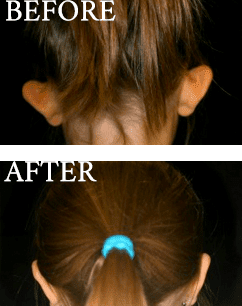Otoplasty (Ear Pinning Surgery)

What is an otoplasty?
Otoplasty also known as "ear pinning," is a surgical procedure in which the ears are surgically altered to make them smaller, flatter, or in better proportion to the rest of the patient's facial features. Most patients who undergo otoplasty have protruding ears that are repositioned closer to the head.
What does this procedure entail?
There are a few different techniques used in performing otoplasty techniques. Dr. Bopp chooses the one that best suits each patient. If the patient has extra skin and cartilage on the backs of their ears, for example, this can be excised prior to pinning the ears back. However, in other instances, in which the ears are too large overall, he re-sculpts the ears before pinning them back.
Who is a candidate for otoplasty?
Otoplasty is an option for individuals of any age who are unhappy with the appearance of their ears. This surgery is most commonly performed on children, but adolescents and adults can have the surgery as well. By the time a child is age four, the ears are nearly at their full adult shape and size. Therefore, the surgery can be considered for any patient over that age.
Is otoplasty permanent?
Yes, otoplasty results are permanent. Once corrected, the new shape and size of one's ears will not change.
Are there scars after otoplasty?
Small scars are present, but not visible. That's because incisions used in otoplasty are tiny and made in the back of the ears.
What does otoplasty recover entail?
The recovery process is fairly simple. Patients wear a compression garment around their ears for the first day, and then transition into a protective headband for a few more days. Swelling subsides within a few days in most cases. The majority of patients are able to resume their usual routine within a week.


